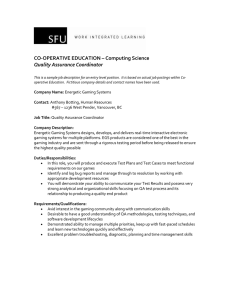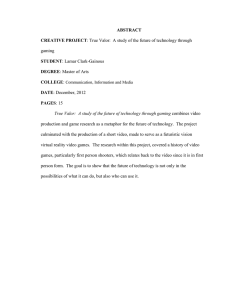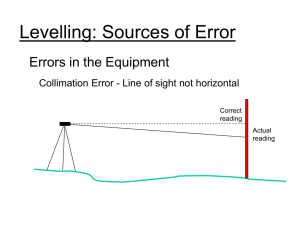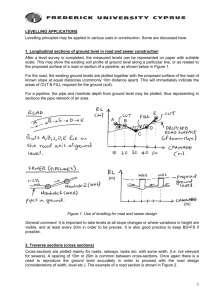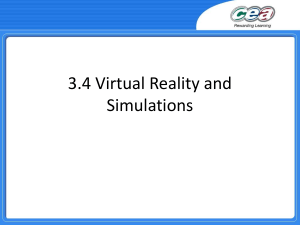pptx - Peter Liljedahl
advertisement
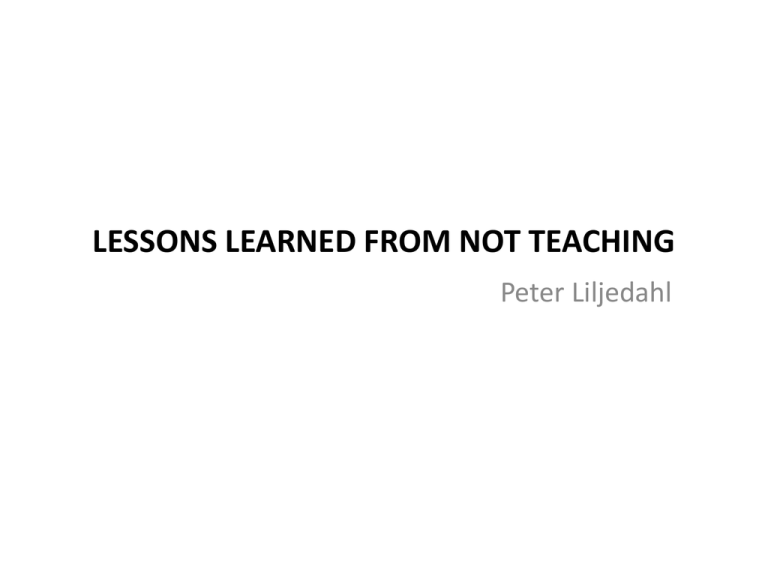
LESSONS LEARNED FROM NOT TEACHING Peter Liljedahl Quadruple Entendre Lessons Learned from 1. NOT teaching in my 8-12 classroom. 2. being in a classroom but NOT as the teacher. 3. teaching in a way that is often considered as NOT teaching. 4. NOT teaching while taking 5 months to travel Europe. STUDENTS DON’T THINK! (sort of) More Specifically • 20% of students are “successful” at mathematics • far fewer than this think of themselves as “successful” – why? – their culminating experience (Calculus) overpowers them • universities have been saying for years that the students are not prepared enough An Example You ask students to try an example: • I don’t know how to do this • mimic your examples • ask a question about “what if ...” which anticipates something you have yet to teach. Only the last of these is “thinking” Who is Thinking? • Students who treat mathematics as a sense making activity. • The ones trying to build connections to past and future ideas. • 2-3 students per class. Is this a New Idea? Explicitly – YES • I have found no research or commentary on this. Implicitly – NO • almost every movement in the last 20 years has tried to get at an ‘itch’ without knowing where to scratch – – – – – – – curriculum revisions NCTM movement and AUS and UK equivalents numeracy movements Singapore math 21st century learning movement both sides of the math wars back to basics movement • BUT they didn’t know it! It was “AN IDEA WITHOUT A NAME” So what are students doing? NOT LEARNING • waiting • mimicking • memorizing • asking to be spoon fed Students are gaming • the classroom • the course • grading criteria • you GAMING Gaming • you may want them to think • they want to get an A, or a B, or a pass, or to do no homework, etc. • in essence, students are playing a game with an objective that is not yours What to do about it? DE(CON)STRUCTION of teaching: • • • • • • • • • • the way we answer questions the way we level the way we give notes the way we give homework the nature of tasks the way we assess the way we review the way we summarize the organization of a lesson the student work space we are changing the rules of the game The Way We Structure Student Work Space Our research has shown that if you change the student work space we change the way they work: – random groups – non-permanent, vertical, big, work surfaces – chaotic desk arrangement – no front of the classroom THEY CAN’T HIDE Answering Questions Our research has shown that students only ask three types of questions: 1. proximity question 2. stop thinking question 3. keep thinking question STOP ANSWERING THE FIRST TWO TYPES OF QUESTIONS! Levelling Our research has shown that the average teachers levels 4-6 times per lesson. – levels at the top – assumption that they can’t go on unless everyone is ‘level’ – this demotivates students to think • they will get an answer in 2-4 minutes • they will get the best answer Levelling To stop demotivating: – stop levelling – level to the bottom • the feeling that we can’t go on is only true in individual work (sometimes) • not true in group work settings – level as a form of summing up (at the end) The Way We Give Notes Our research has shown that notes are not meaningful: – usually a copy of what’s in the text – it is a SENSE MADE exercise rather than a SENSE MAKING exercise – replaces learning NOW with the drive to ensure they have material to maybe learn LATER Meaningful notes: – what is interesting – what can’t be found elsewhere – what had meaning The Way We Give Notes Our research has shown that students don’t need to TAKE notes: – about 3 students per class will be uncomfortable without notes – 1 of these will be paralysed by it GIVE STUDENTS THE NOTES Build a Culture of Thinking Students are creatures of habit: • demand thinking • expect that they own their learning • enable them to own their own learning • never let up Skills • • • • • • • • collaboration communication perseverance risk taking motivation curiosity autonomy problem solving THINKING



